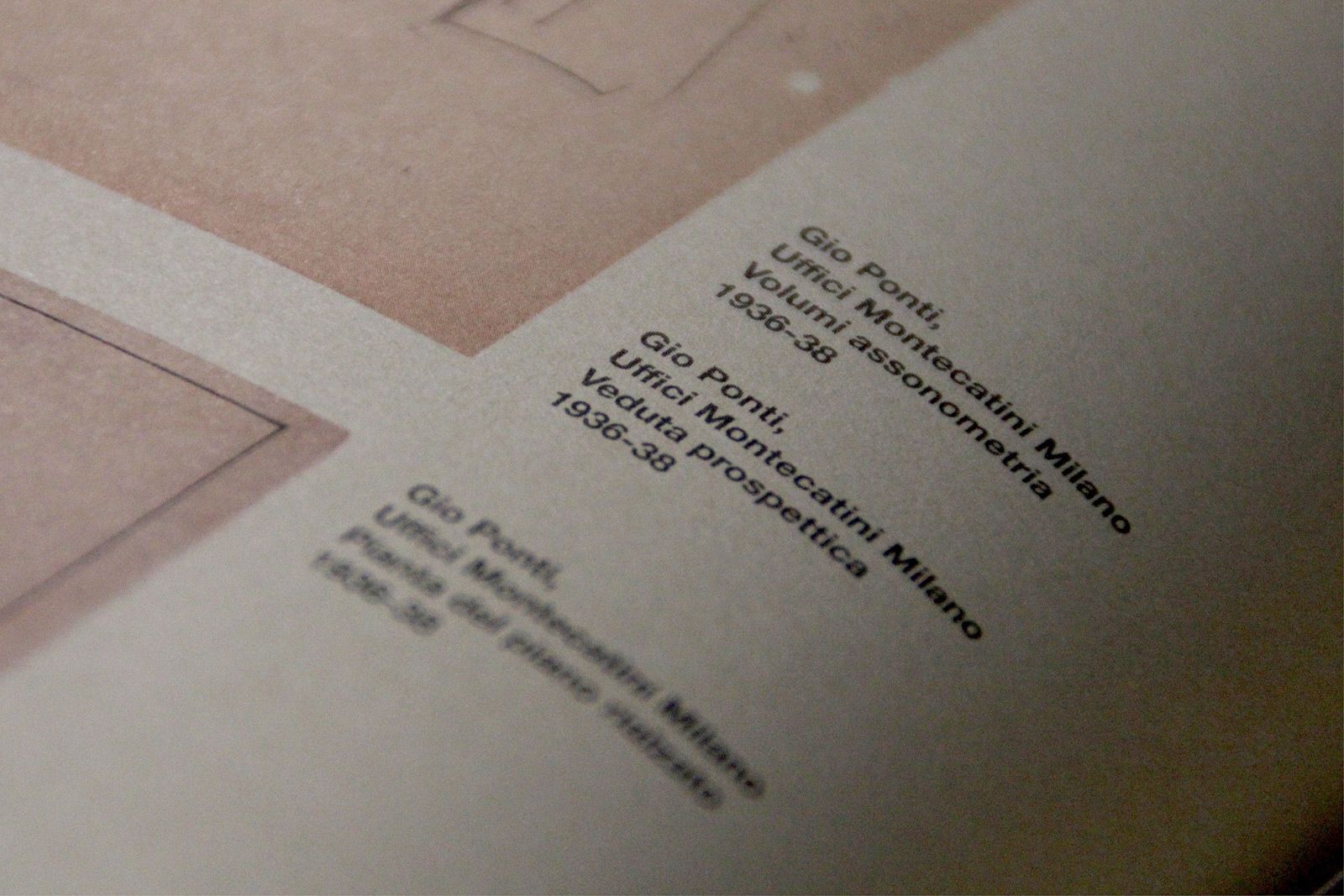Coordination of the visual communication for the
7th edition of Triennale Design Museum.
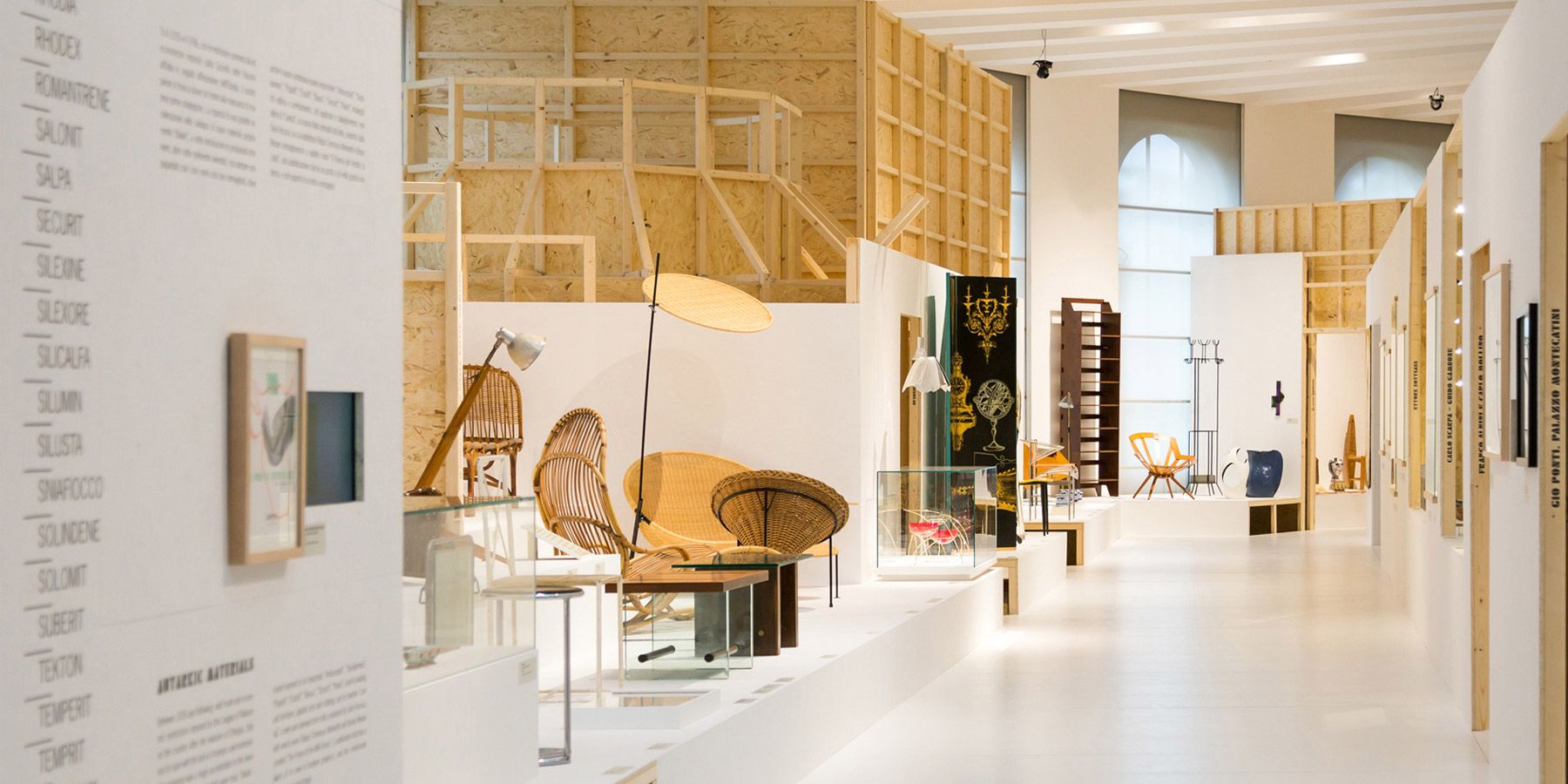
The “strada novissima”—the main pathway in the exhibition.
Ph. © Triennale Design Museum
Ph. © Triennale Design Museum
 Ph. © Triennale Design Museum
Ph. © Triennale Design Museum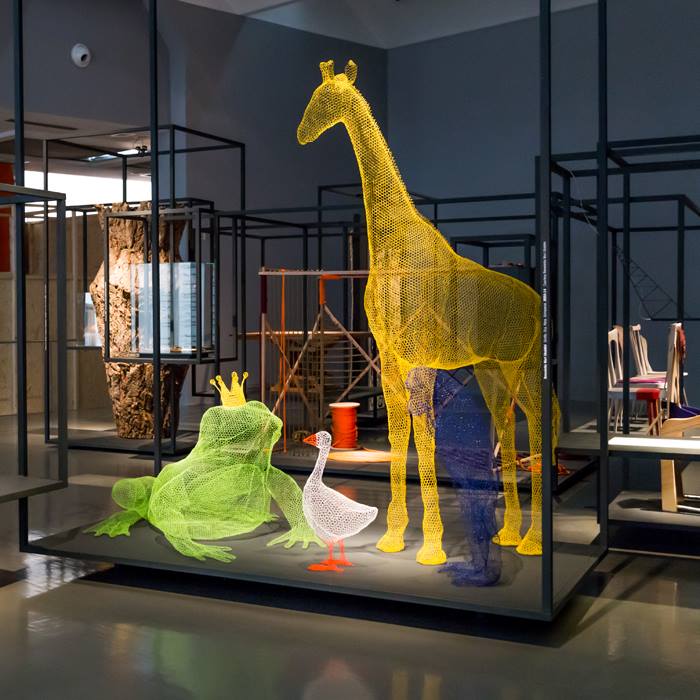 Ph. © Triennale Design Museum
Ph. © Triennale Design Museum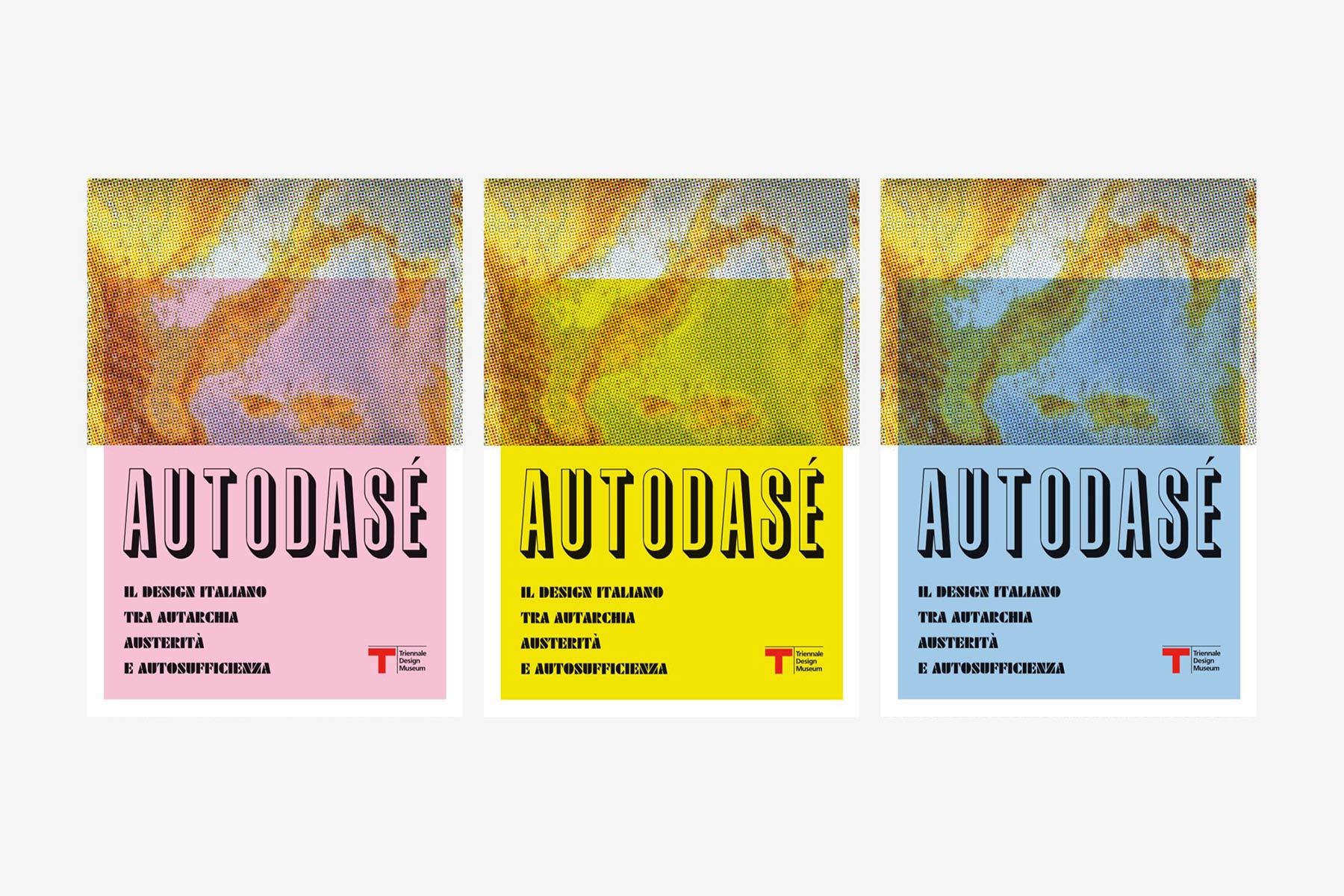
Preliminary graphics for the
posters, designed when
the title was supposed to
be Autodasé.
2014 © Italo Lupi + Nicola-Matteo Munari
posters, designed when
the title was supposed to
be Autodasé.
2014 © Italo Lupi + Nicola-Matteo Munari
The 7th edition of Triennale Design Museum was dedicated to the theme of ‘Italian Design Beyond The Crises,’ focusing on three crucial moments in the history of Italian design—1930s’ autarky, 1970s’ austerity, and contemporary self-production.
Conceived by Silvana Annicchiarico—director of the museum from 2007 to 2018—and curated by Beppe Finessi—editor-in-chief of Inventario magazine—the exhibition promoted the idea that difficulties and constraints imposed by economical crises stimulate experimentation and creativity in design.
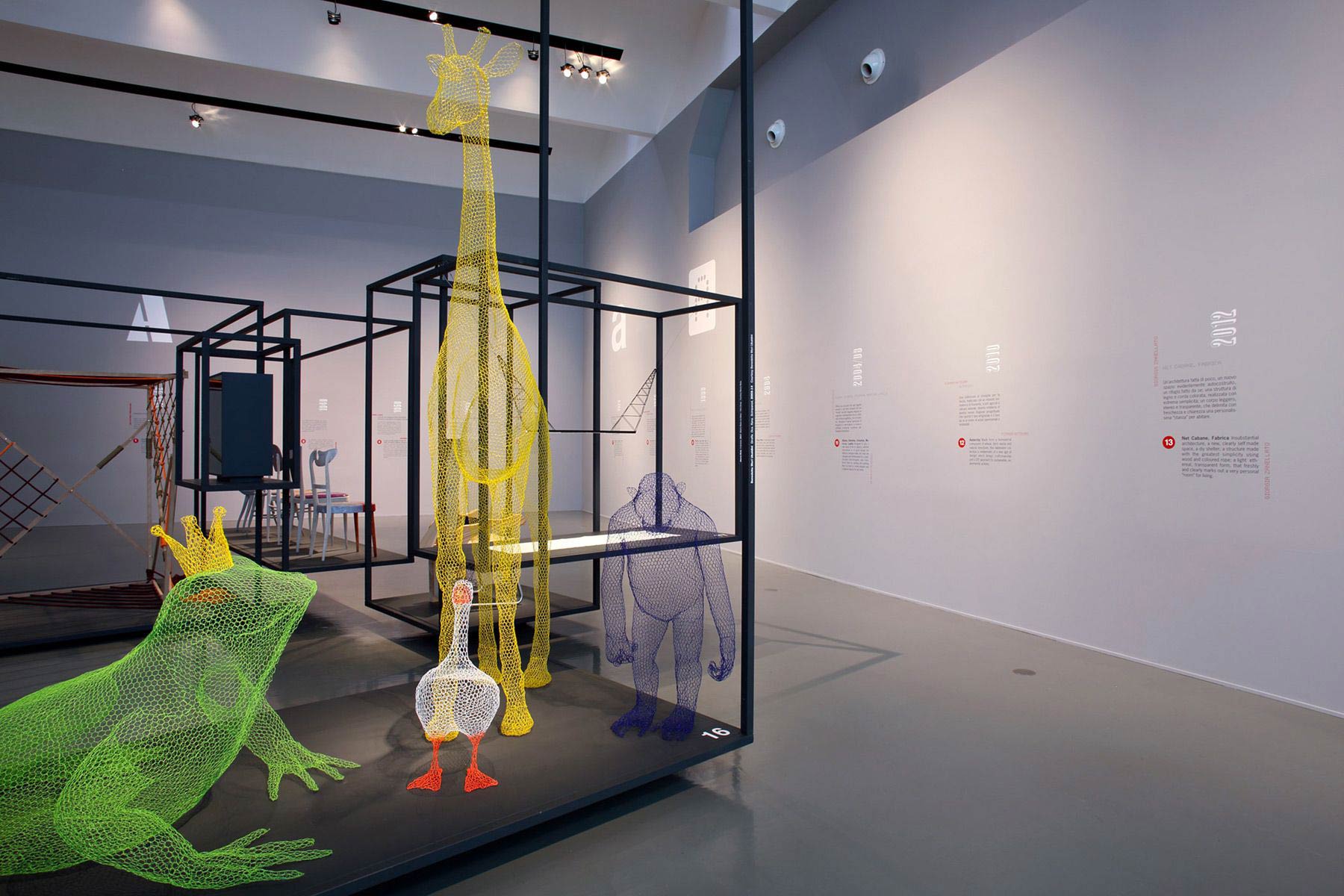
The large opening room with
a chronicle of Italian design
displayed along the wall.
Ph. © Triennale Design Museum
a chronicle of Italian design
displayed along the wall.
Ph. © Triennale Design Museum
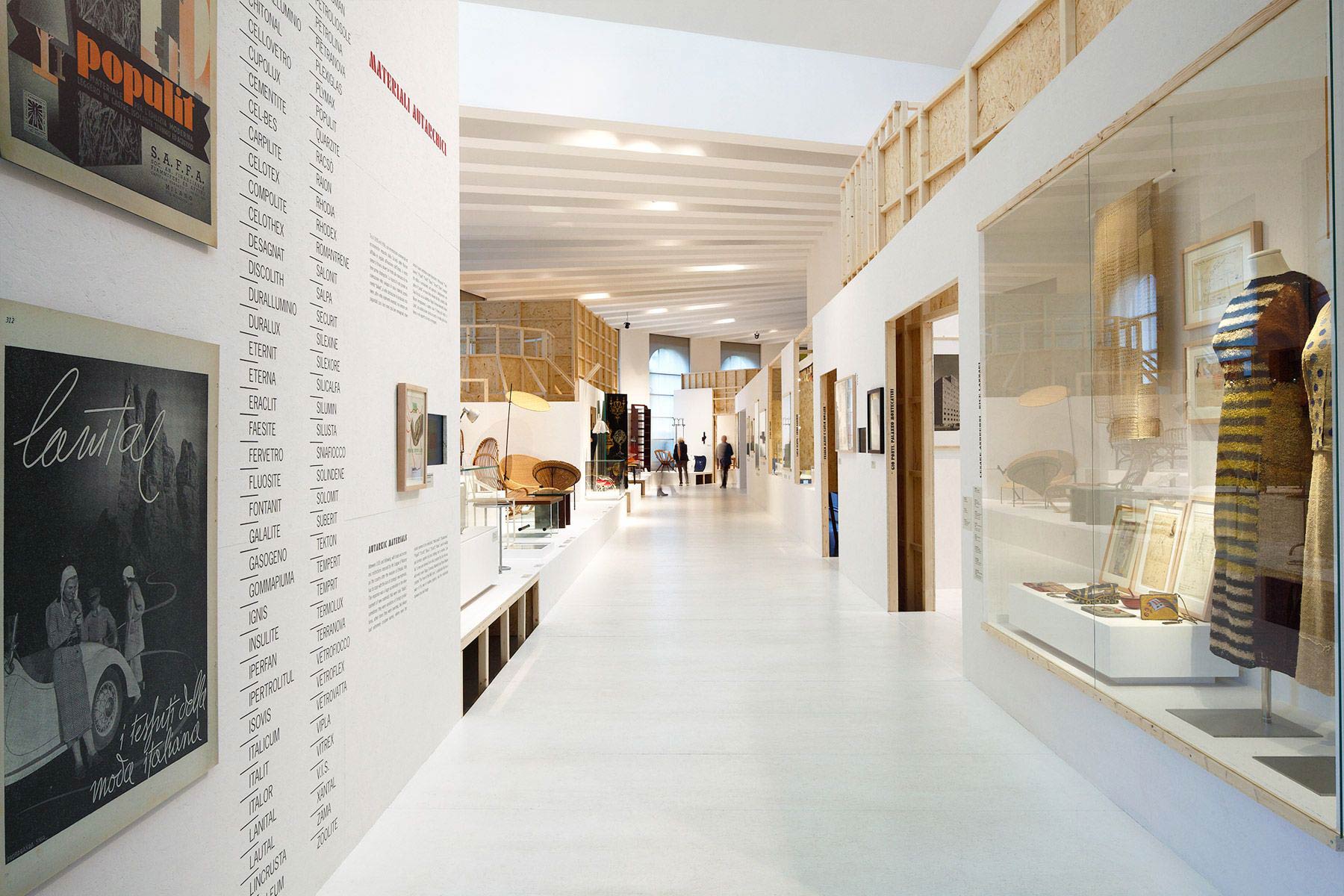
A perspective of the “strada
novissima” with monographic
rooms and displays.
Ph. © Triennale Design Museum
novissima” with monographic
rooms and displays.
Ph. © Triennale Design Museum
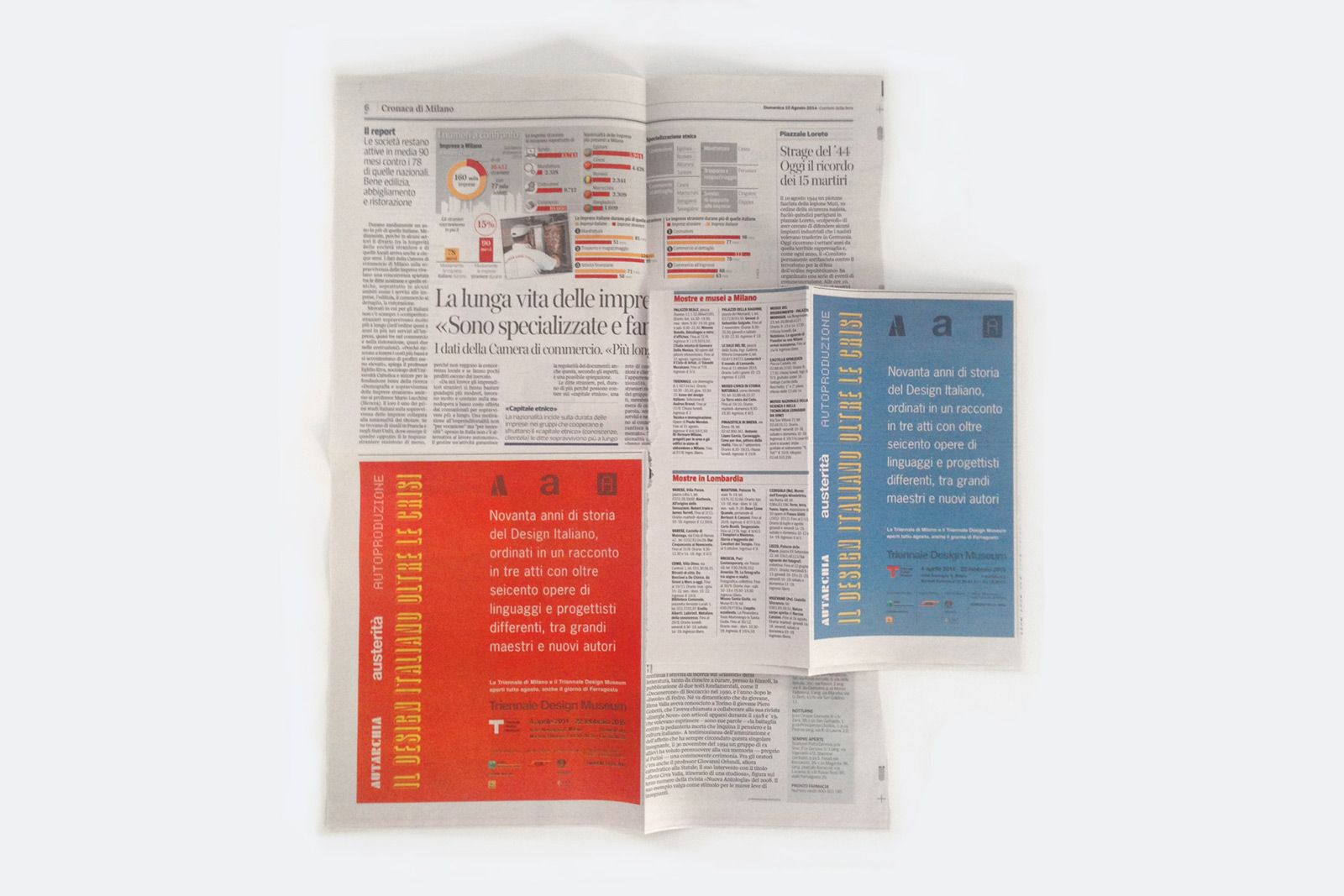
Advertisements designed for
the exhibition have been
published on the most important
Italian newspapers.
Ph. © Nicola-Matteo Munari
the exhibition have been
published on the most important
Italian newspapers.
Ph. © Nicola-Matteo Munari
The design of the exhibition was developed by French designer Philippe Nigro (1975), who revisited the museum’s spaces in an original way by playing with the contrasts full-empty and complete-incomplete.
The visual communication was designed under the direction of graphic design master Italo Lupi (1934) and—beyond exhibition graphics—included advertisements, posters, flyers, catalogue, tram liveries, leaflets, and more.
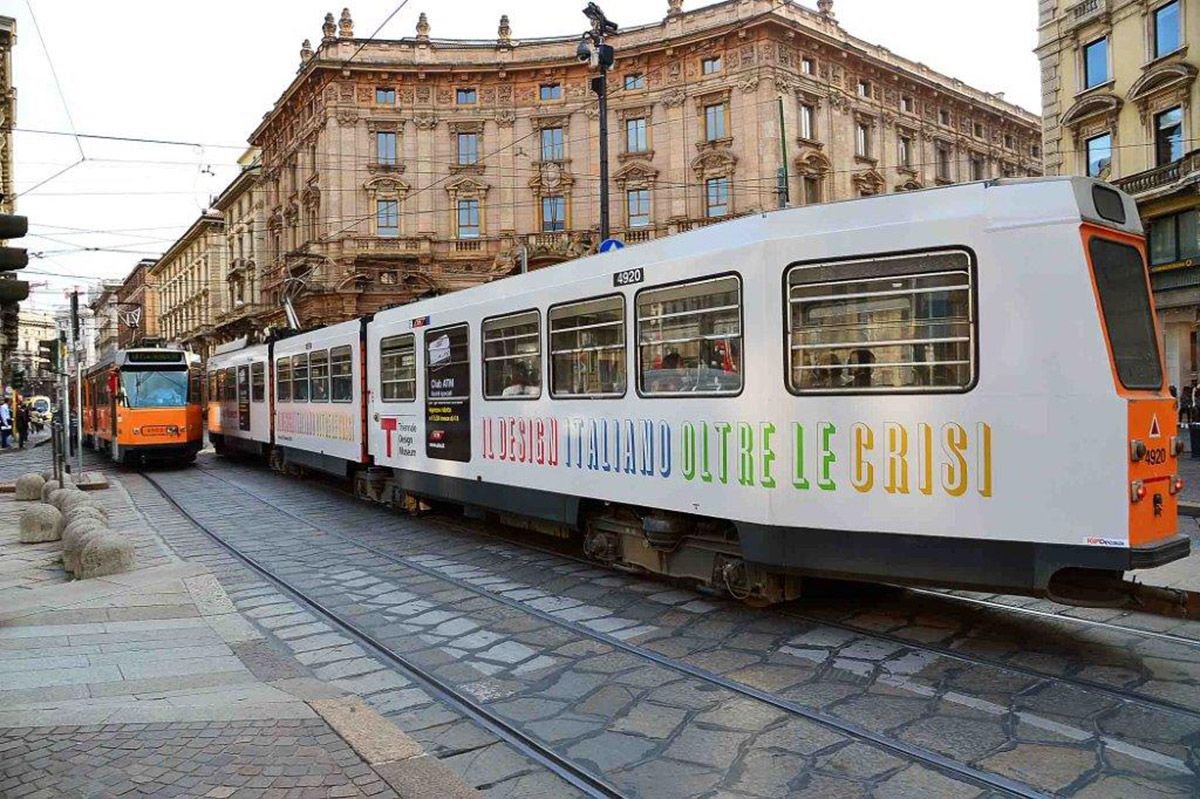
Detail of a livery designed
for urban trams.
Ph. © Triennale Design Museum
for urban trams.
Ph. © Triennale Design Museum

Detail of an artwork by
Benedetta Mori Ubaldini,
displayed in the large
opening room.
Ph. © Triennale Design Museum
Benedetta Mori Ubaldini,
displayed in the large
opening room.
Ph. © Triennale Design Museum
“The greatest challenge for the staging of this edition of Triennale Design Museum was that of giving consistency to a tale that spans more than 90 years in the history of design, consisting of over 650 works.”
Philippe Nigro
Exhibition Designer
Exhibition Designer
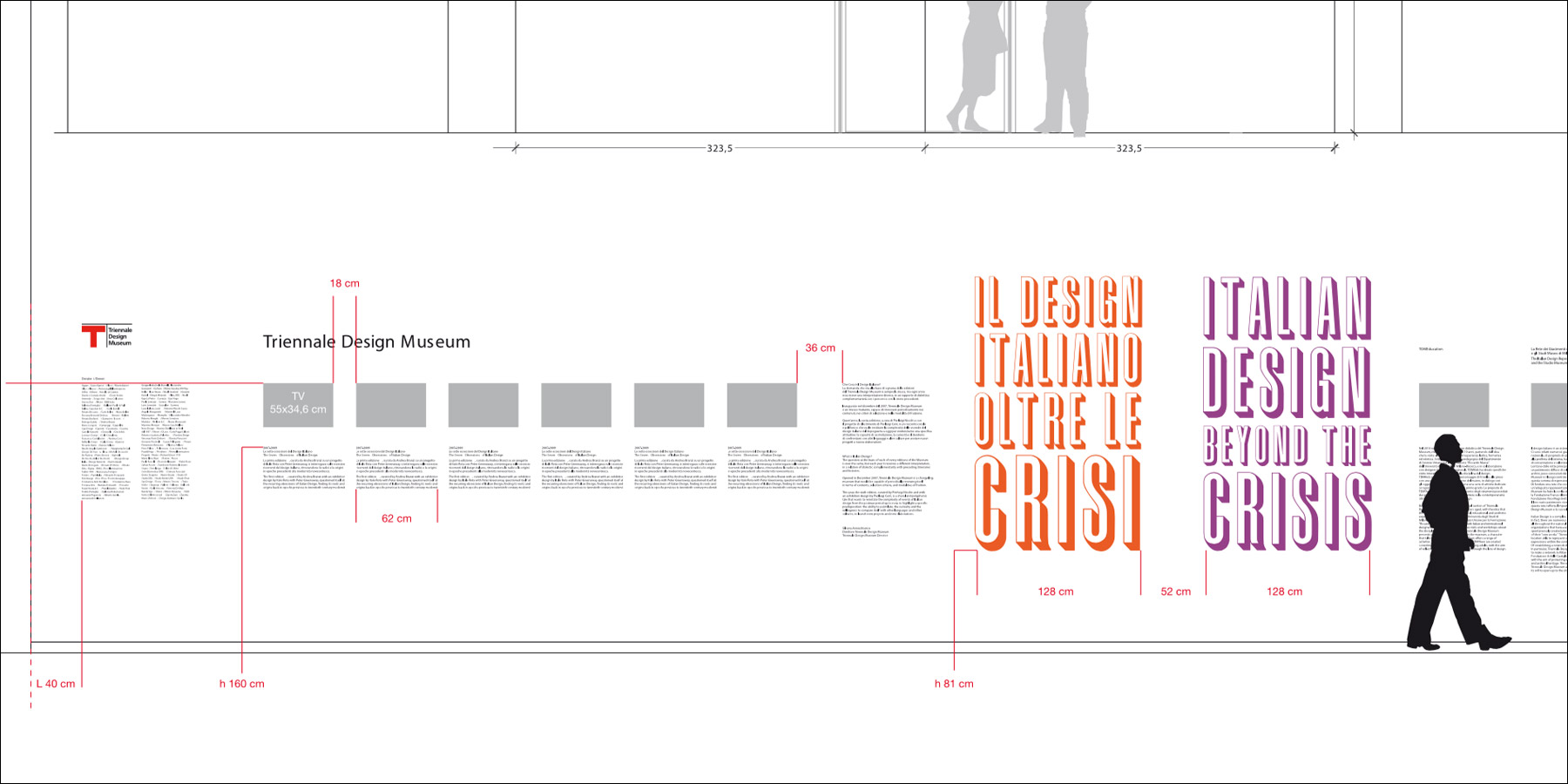
Technical drawing for
the positioning
of pre-spaced decals.
2014 © Italo Lupi + Nicola-Matteo Munari
the positioning
of pre-spaced decals.
2014 © Italo Lupi + Nicola-Matteo Munari
The exhibition illustrated an unsung story of Italian design and craftsmanship, enriched by more than 650 works made by some of the most important authors.
The list of the designers exhibited included many of the greatest masters of Italian architecture, design, and styling such as Gio Ponti, Franco Albini, Carlo Mollino, Salvatore Ferragamo, Piero Fornasetti, Ettore Sottsass, Enzo Mari, and many others.
The objects were displayed in chronological order, starting from a small room dedicated to Fortunato Depero. While the “strada novissima”—a pathway that was entirely painted in white—was the major section featuring monographic rooms on both sides.
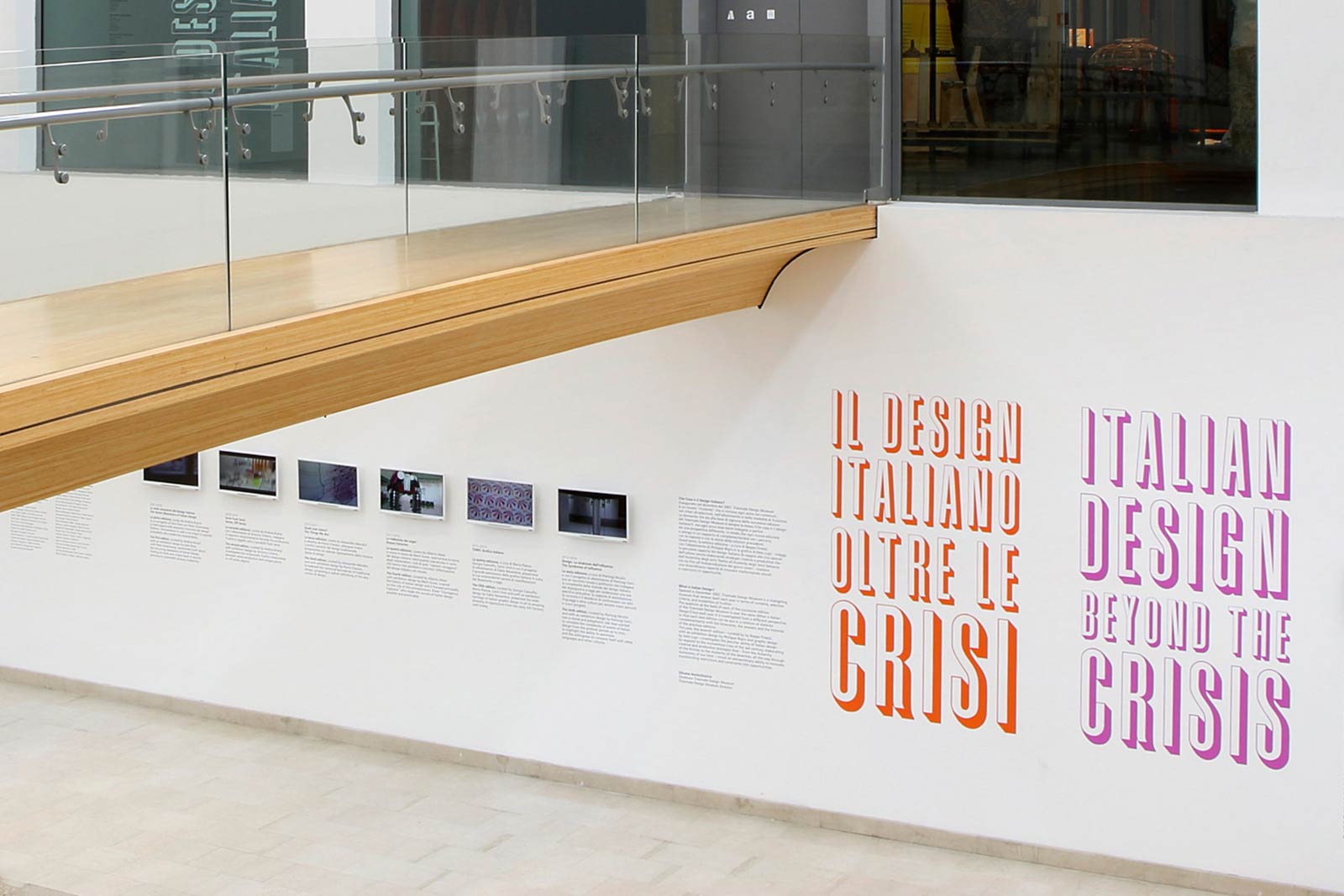
The wall with pre-spaced decals,
righ in front of the great
staircase of Milan Triennale.
Ph. © Triennale Design Museum
righ in front of the great
staircase of Milan Triennale.
Ph. © Triennale Design Museum
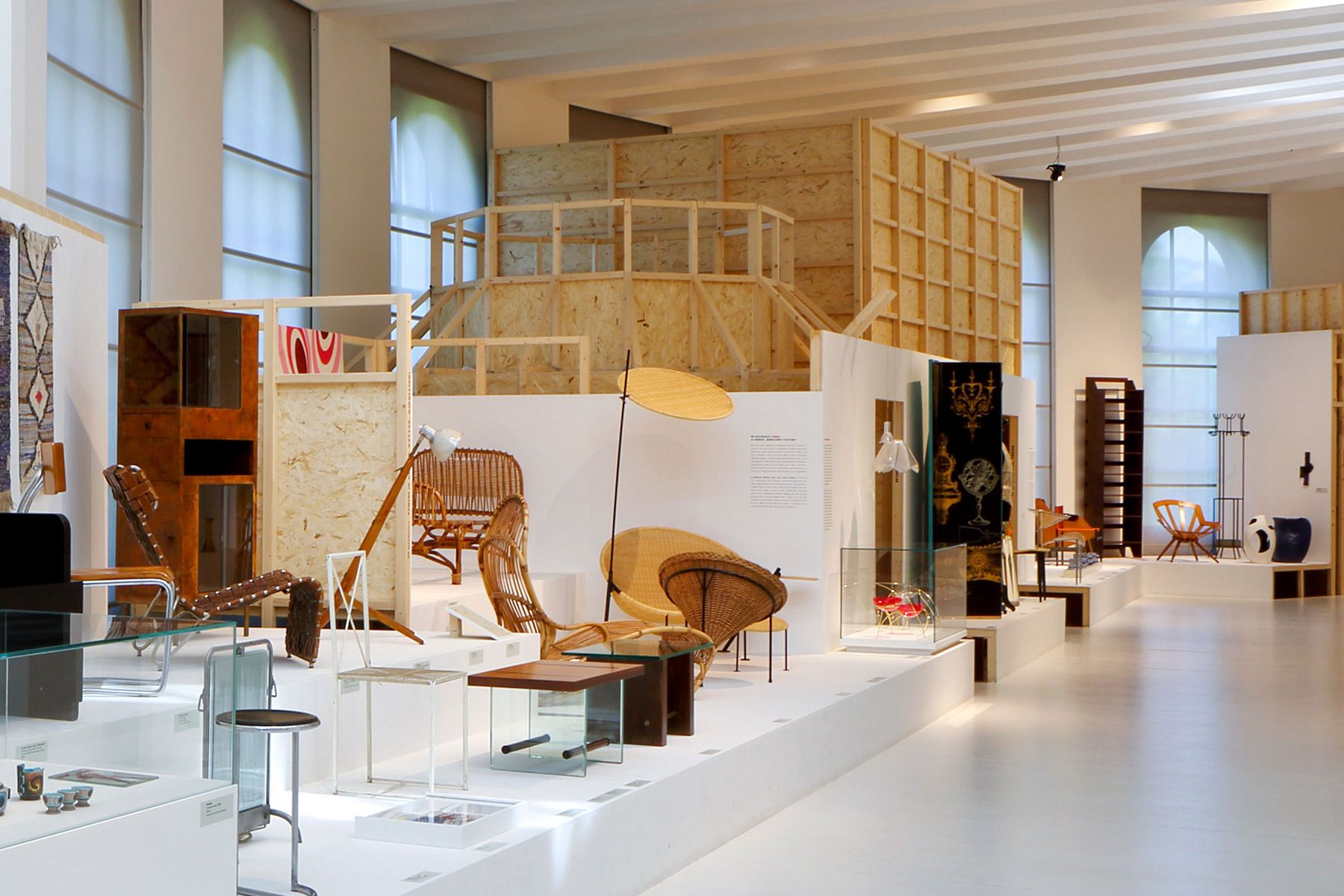
A view of the section
dedicated to autarkic design.
Ph. © Triennale Design Museum
dedicated to autarkic design.
Ph. © Triennale Design Museum
The stage design was characterised by poor materials that were evocative of both autarky and self-production, arranged in such a way to form “a urban scenario made of façades, curtains, and perspectives” (Silvana Annicchiarico).
Before the pathway, came a large room that housed a selection of the most representative objects of the three periods, mixed together and framed by elegant structures made of steel.
The exhibition was visited by nearly 200.000 visitors and was published by major national and international newspapers—The New York Times, Repubblica, Il Giornale, il Post—and magazines—Artribune, Domus, Doppiozero, Living, Klat, Il Giornale dell’Arte, etc.
—Nicola-Matteo Munari
Client
Triennale Design Museum
Graphic Design
Italo Lupi
Nicola-Matteo Munari
Exhibit Design
Philippe Nigro
Coordination
Roberto Giusti
(Triennale Design Museum)
Project Date
2014
Triennale Design Museum
Graphic Design
Italo Lupi
Nicola-Matteo Munari
Exhibit Design
Philippe Nigro
Coordination
Roberto Giusti
(Triennale Design Museum)
Project Date
2014

